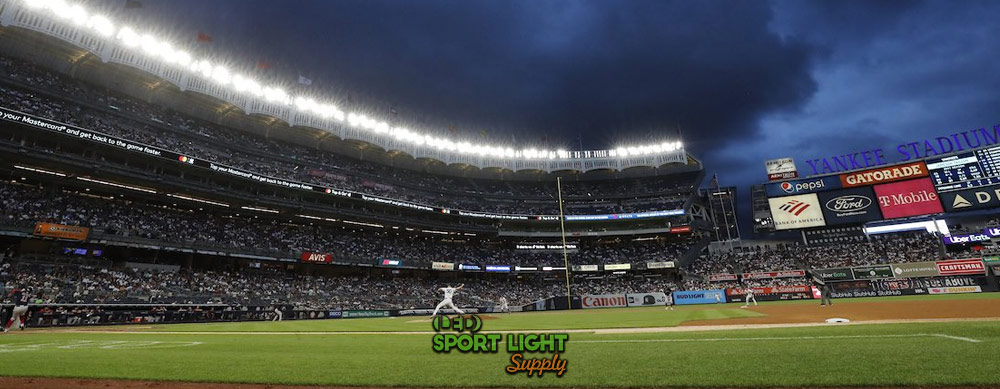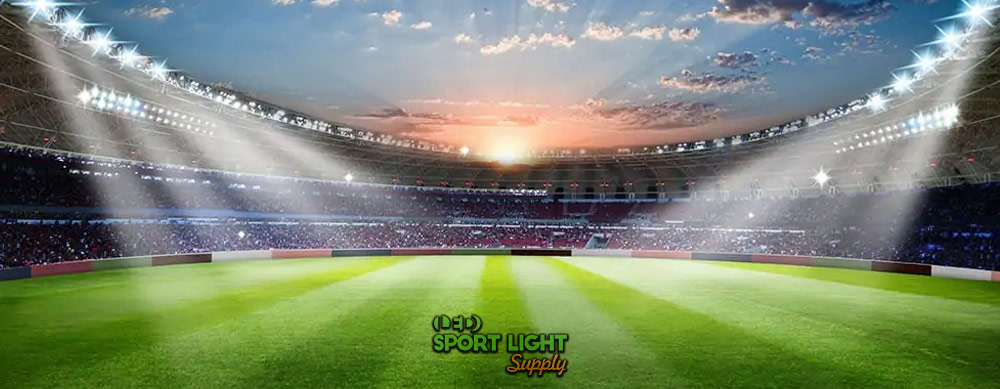Missing a goal due to flickering lights on the football field can be frustrating. But have you ever wondered why LED lights in stadiums sometimes flicker? Although LED technology has been widely used in sports venues for many years, flickering remains a common issue. This problem is often related to the switch and glow technologies used in these lighting systems. This article explores an innovative LED device designed to address and resolve the flickering problem in stadium lighting.
Table of Contents
ToggleTypes of LED Flickering
LED flickering in stadium lighting can be categorized into two primary types based on their visibility to the human eye: visible flickering and invisible flickering.
Visible Flickering
Visible flickering involves rapid changes in light output that can be detected by the human eye. This occurs when the frequency of light waves fluctuates, sometimes reaching up to 40 Hz. Such fluctuations are particularly noticeable during high-stakes moments, such as a crucial play in a football game, where the rapid changes can create distractions and discomfort. The impact of visible flickering is significant, as it can disrupt the focus of both players and spectators, potentially affecting performance and enjoyment.
Invisible Flickering
Invisible flickering happens at frequencies that are not perceptible to the naked eye. Although this type of flickering is not directly visible, it can still affect comfort and health over time. Prolonged exposure to environments with invisible flickering may lead to symptoms such as eye strain, headaches, and general discomfort. Even if the flickering is not immediately noticeable, its cumulative effects can contribute to visual fatigue and discomfort, impacting overall well-being in settings with high visual demands.
Causes of LED Flickering

Several factors can lead to flickering in LED stadium lights, impacting the overall performance and reliability of the lighting system. Understanding these causes can help in diagnosing and addressing flickering issues effectively.
Quality of Components
One of the primary causes of flickering in LED stadium lights is the use of poor-quality bulbs and components. LED floodlights, despite their compact size, rely on a complex system of parts that must work together seamlessly. When inexpensive or low-quality components are used, they often lack the durability and consistency required for stable performance. This can result in unreliable operation and frequent flickering. For instance, cheaper LEDs may have less effective heat management, leading to thermal instability and subsequent flickering. Similarly, subpar drivers and power supplies may not deliver consistent voltage, further contributing to flickering. Investing in high-quality LED lights from reputable suppliers not only reduces the likelihood of such issues but also helps in minimizing long-term maintenance costs and ensuring reliable performance over time.
Loose Connections
Loose connections within the lighting system can also cause flickering. These connections include wiring, switches, and terminals that may become loose over time due to vibration, thermal expansion, or poor installation practices. Loose connections can interrupt the flow of electricity, causing intermittent power supply to the LED lights. This interruption results in visible flickering as the lights struggle to maintain a stable output. Regular maintenance, including checking and tightening these connections, is crucial for preventing flickering. Ensuring that all components are securely connected helps maintain stable performance and prolongs the lifespan of the lighting system.
Driver Issues
LED lights are typically controlled by drivers that manage the voltage and current supplied to the LEDs. These drivers are essential for converting the AC voltage from the power source into the DC voltage required by the LEDs. A damaged or faulty driver can cause fluctuations in the AC current, leading to inconsistent power delivery and flickering. For example, if the driver fails to regulate voltage properly, it may cause the LEDs to flicker or even dim intermittently. To minimize flickering and ensure consistent light output, it is crucial to use high-quality drivers designed to handle the specific demands of high-power LED systems. Regular inspection and replacement of faulty drivers can prevent flickering and maintain optimal lighting conditions.
High-Power Systems
Stadium lights often operate at high power levels, ranging from 1000W to 2000W. When multiple high-power LEDs are used, the system can experience significant current surges, especially if the driver is not functioning correctly. These surges can overwhelm the electrical components, leading to flickering and instability in the lighting system. Additionally, the high power demands can exacerbate any existing issues with drivers or connections, making flickering more pronounced. Proper design and maintenance of high-power LED systems are essential to managing current surges and preventing flickering. This includes ensuring that drivers and power supplies are rated appropriately for the power levels required and that all connections are secure and well-maintained.

Health Implications of Flickering
Recent medical research has demonstrated that both visible and invisible flickering in lighting can have significant adverse effects on human health.
Invisible Flickering
Invisible flickering, while not detectable to the naked eye, can still lead to health issues when experienced over long periods. Prolonged exposure to environments with invisible flickering can result in symptoms such as dizziness, headaches, and general discomfort. These symptoms are often exacerbated in settings with high visual stimulation, such as during intense sports events. The continuous strain caused by invisible flickering can disrupt equilibrium, contribute to tension headaches, and lead to overall visual fatigue and discomfort.
Visible Flickering
Visible flickering is associated with more severe health concerns. The rapid changes in light frequency that are perceptible to the human eye can trigger a range of health issues. Most notably, visible flickering has been linked to photosensitive epilepsy. Individuals with this condition may experience seizures triggered by the rapid fluctuations in light. Beyond the risk of seizures, visible flickering can cause visual disturbances and stress, impacting overall well-being. Addressing and mitigating flickering issues is therefore essential not only for enhancing comfort but also for ensuring the safety and health of individuals in environments where such lighting is used.
Solutions for Flickering in Stadium Lighting

Addressing flickering in stadium lighting involves implementing several effective strategies, focusing on both equipment quality and regular maintenance practices.
High-Quality LED Equipment
Investing in high-quality LED lighting systems is essential for reducing the likelihood of flickering. Advanced matrix LED devices are specifically designed to minimize flickering and deliver more stable performance. These high-quality systems use superior components and technology to ensure consistent light output and reduce the risk of performance issues. Additionally, high-quality equipment often simplifies maintenance tasks and extends the overall lifespan of the lighting system. By selecting well-engineered LED lights from reputable manufacturers, stadium operators can significantly improve the reliability and efficiency of their lighting installations.
Regular Maintenance
Regular inspection and maintenance of LED lighting systems are crucial for managing and preventing flickering. Routine maintenance practices help identify and address potential issues before they escalate into significant problems. For example, regular checks can uncover loose connections, damaged drivers, or other components that may contribute to flickering. By ensuring that all elements of the lighting system are functioning correctly and performing timely repairs or replacements as needed, stadium operators can significantly reduce flickering and maintain consistent lighting quality. Implementing a proactive maintenance schedule ensures that the lighting system remains reliable and performs optimally throughout its operational life.
Conclusion
Flickering lights in stadiums can disrupt gameplay and spectator comfort, with visible flickering causing distractions and invisible flickering leading to health issues over time. Addressing flickering involves using high-quality LED equipment and regular maintenance to ensure stable performance.
For more information on stadium lighting design or to get assistance with your lighting needs, please contact us. We offer free lighting design consultations to help you achieve the best results for your stadium lighting systems.
